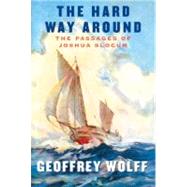
| Sailing into the World | |
| Prologue The Tales He Could Have Told | p. 3 |
| Unafraid of a Capful of Wind | p. 7 |
| Coming Aboard Through the Hawse-Hole | p. 13 |
| Master Slocum | p. 33 |
| Love Stories | p. 47 |
| Enterprises | p. 61 |
| Northern Light | p. 77 |
| Mutiny | p. 87 |
| Stranding | p. 113 |
| Sailing Around It | |
| Salvage | p. 131 |
| Destroyer and Poverty Point | p. 141 |
| The Great Adventure | p. 157 |
| What Came After | p. 191 |
| Acknowledgments | p. 215 |
| Bibliography of Sources Cited | p. 217 |
| Table of Contents provided by Ingram. All Rights Reserved. |
The New copy of this book will include any supplemental materials advertised. Please check the title of the book to determine if it should include any access cards, study guides, lab manuals, CDs, etc.
The Used, Rental and eBook copies of this book are not guaranteed to include any supplemental materials. Typically, only the book itself is included. This is true even if the title states it includes any access cards, study guides, lab manuals, CDs, etc.